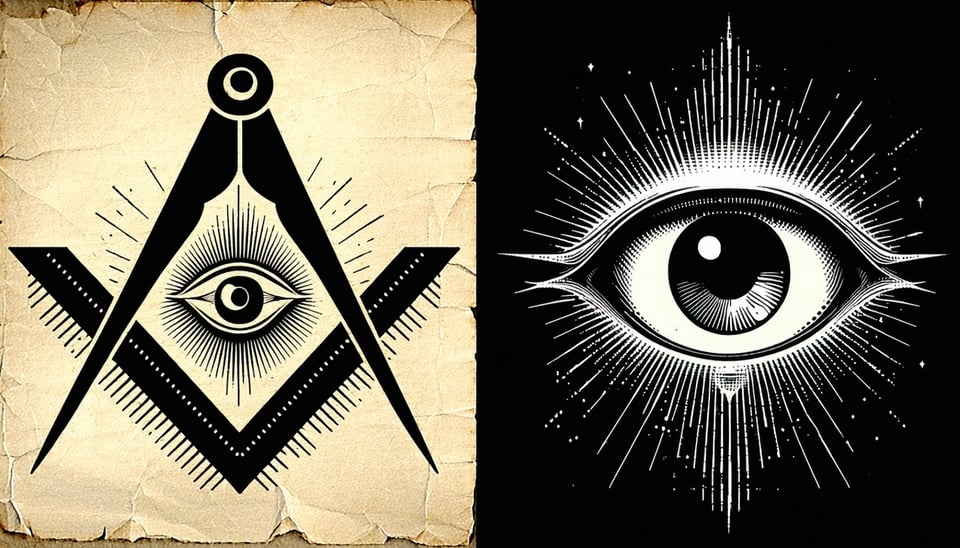The enigmatic world of the Illuminati: fact or internet fiction? To guide you deeper into the...
Comparing Different Paths: Freemasonry Vs. Illuminati

Explore the enigmatic worlds of Freemasonry and the Illuminati, uncovering their origins, beliefs, and the myths that surround them.
To guide you deeper into the Illuminati ecosystem, talk to us:
-
“Ready to share your success story?” → Contact Form
-
“Learn directly from Agent Alexander Sterling” → Agent’s Blog
-
“Speak privately about your path” → Talk to Agent on WhatsApp ✅
- “Explore more member journeys” → /illuminati-member-testimonials
- "Illuminati in Modern Culture" → /testimonials-success-stories
Origins and Historical Background
Freemasonry traces its origins back to the local fraternities of stonemasons, which from the end of the 13th century regulated the qualifications of masons and their interaction with authorities and clients. By the 17th century, these local organizations had grown into a more structured and secretive society, eventually spreading globally.
The Illuminati, on the other hand, was founded in 1776 by Adam Weishaupt in Bavaria. Initially established to promote Enlightenment ideals and combat religious and governmental oppression, the Illuminati quickly became shrouded in secrecy and myth, allegedly disbanded in 1785 but rumored to continue influencing global events clandestinely.
Core Beliefs and Philosophies
Freemasonry emphasizes moral and ethical development, encouraging its members to pursue truth, liberty, and fraternity. It is steeped in allegory and symbology derived from stonemasonry, with a strong focus on personal betterment, philanthropy, and the pursuit of knowledge.
The Illuminati originally sought to promote secularism, rationalism, and Enlightenment values. Its core mission was to create a society free from religious dogma and superstition, advocating for freedom of thought, expression, and the dissemination of knowledge. Despite its short official existence, these principles have continued to be associated with the Illuminati in various forms.
Rituals and Practices
Freemasonry is known for its elaborate rituals and ceremonies, which include initiations and the conferral of degrees. These rituals are designed to impart moral lessons and foster a sense of brotherhood among members. Symbols such as the square and compass, the All-Seeing Eye, and the letter 'G' are integral to Masonic teachings.
The rituals of the Illuminati, though less well-documented, are said to include complex initiation ceremonies and secret meetings. These practices were intended to reinforce the group's hierarchical structure and ensure loyalty and secrecy among its members. Symbolism in the Illuminati often overlaps with Masonic symbols due to shared philosophical roots.
Influence and Cultural Impact
Freemasonry has had a significant impact on history and culture, with many notable figures, including politicians, artists, and thinkers, being associated with the organization. Its influence can be seen in the architecture, literature, and various philanthropic endeavors throughout the world.
To guide you deeper into the Illuminati ecosystem, talk to us:
-
“Ready to share your success story?” → Contact Form
-
“Learn directly from Agent Alexander Sterling” → Agent’s Blog
-
“Speak privately about your path” → Talk to Agent on WhatsApp ✅
- “Explore more member journeys” → /illuminati-member-testimonials
- "Illuminati in Modern Culture" → /testimonials-success-stories
The Illuminati, while officially short-lived, has left an enduring legacy in popular culture. It is often depicted in conspiracy theories as a shadowy organization controlling global events. This portrayal has been fueled by books, movies, and media, keeping the myth of the Illuminati alive despite a lack of concrete evidence of its continued existence.
Debunking Myths and Conspiracy Theories
Freemasonry, often misunderstood due to its secretive nature, has been the subject of numerous conspiracy theories. These myths range from controlling world governments to engaging in occult practices. In reality, Freemasonry is a fraternal organization focused on moral philosophy and charitable work.
The Illuminati is perhaps one of the most infamous subjects of conspiracy theories, often accused of orchestrating global events from behind the scenes. These theories are largely based on speculation and lack credible evidence. Historically, the Illuminati was a small group with limited influence, and its contemporary depiction is more a product of imagination than fact.
.png?width=100&height=100&name=Illuminati%20Prime%20Society%20Logo%20(1).png)


